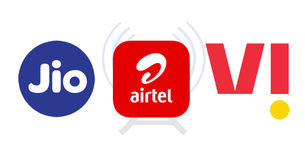Telecom News
- Accessories News
- Audio News
- Cameras News
- EV News
- Gaming News
- Internet News
- Miscellaneous News
- Mobiles News
- Personal Computing News
- Smart home/ IoT News
- Software & Apps News
- Tablets News
- Telecom News
- TV News
- Utilities News
- Wearables News
Telecom News: Get the latest Telecom News, Headlines and more Top news from the telecom world in India as it happens. Be it Jio, Airtel, Vodafone Idea or BSNL, we bring you all the breaking news first in the industry.














